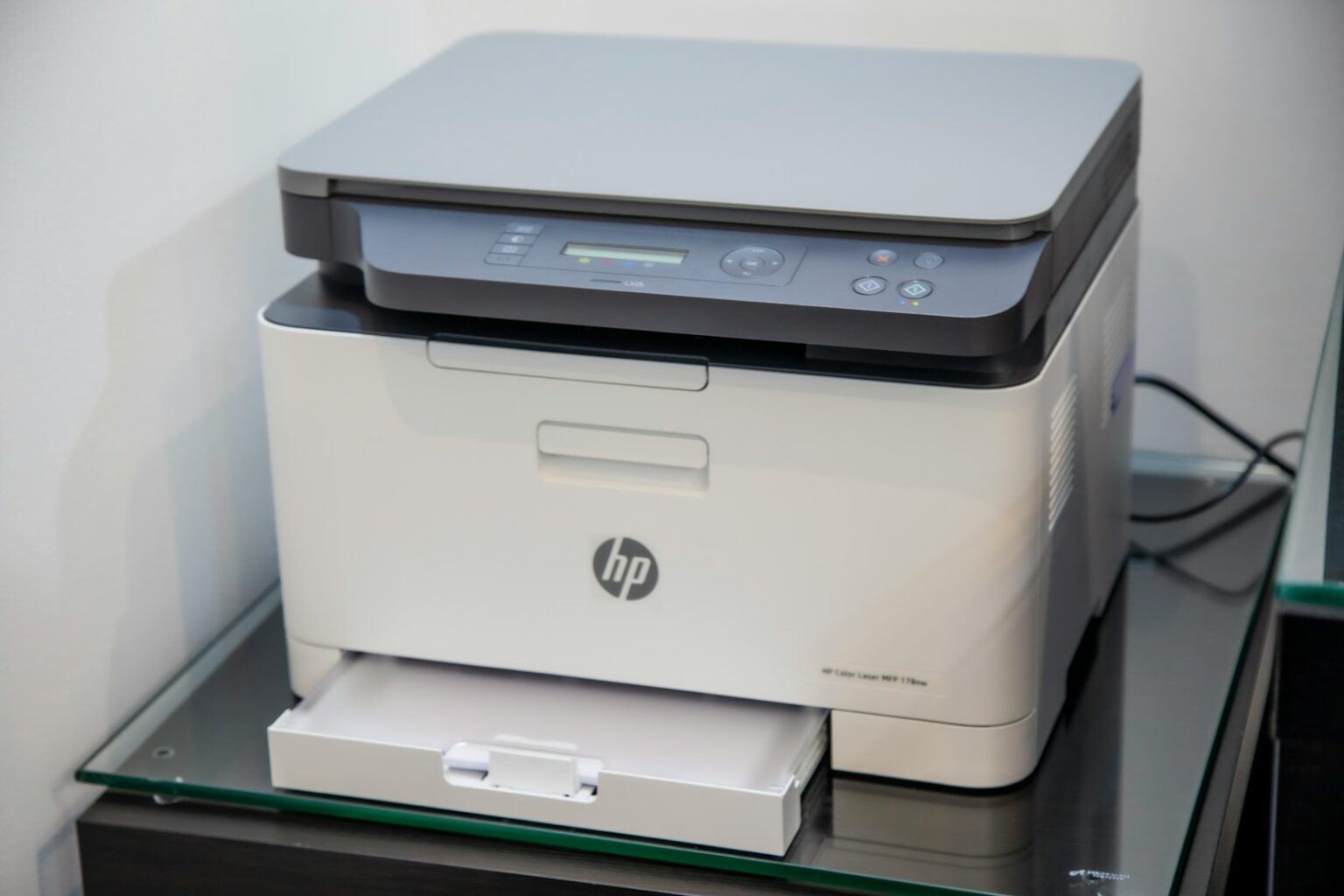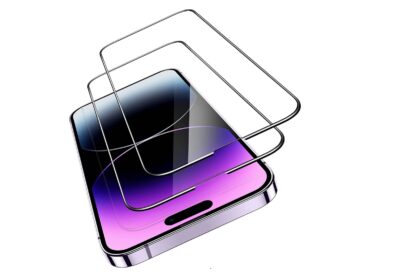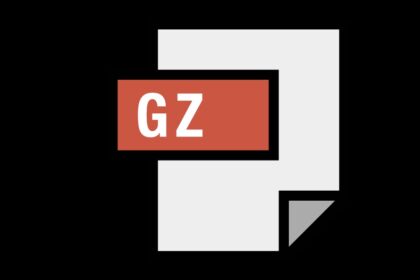AirPrint is Apple’s built-in wireless printing protocol that lets iPhone and iPad users send jobs without extra drivers or software. This technology makes printing fast and simple, cutting cables and manual setup. It also avoids driver installs and messy configuration on a page or app.
This short guide helps users solve common issues and the “No AirPrint Printers Found” error. You will learn quick checks and fixes for the usual culprits: mismatched Wi‑Fi, guest networks, VPNs, router isolation, and blocked discovery traffic.
We’ll confirm compatibility on Apple’s official list, examine the printer control panel and embedded web server, and verify that both devices share the same SSID. Deeper checks cover Bonjour/mDNS, IPP, AirPrint toggles, TLS 1.2, and device certificates.
Follow clear, time‑saving steps that suit beginners and power users alike. By the end you’ll know the printer model name, whether true AirPrint support exists, and what to do next if it does not.
AirPrint at a glance and why compatibility matters
Get a clear picture of how Apple discovery works over Wi‑Fi and what blocks printers from showing up. AirPrint lets iPhone, iPad, and Mac find and print to compatible models on the same wireless network without drivers.
What AirPrint is and how discovery works
Discovery relies on Bonjour/mDNS service advertisements. Your device listens for those packets and lists available printers automatically. This makes printing fast for users and removes manual driver installs.
Common causes of a “No AirPrint Printers Found” error
Only models that explicitly support AirPrint will appear. Generic wireless printing features do not guarantee discovery.
- Mismatched SSIDs or guest segments that isolate devices on the network.
- Bonjour/mDNS or IPP disabled in the printer settings.
- Outdated firmware or router multicast problems that hide devices.
- VPNs, AP/Client Isolation, or firewall rules blocking multicast traffic.
- Some apps use proprietary printing methods and may show printers even when discovery fails.
Quick triage: make sure both the device and the printer share the same network name and that the -fi network isn’t a guest segment. Rebooting the router can clear multicast cache and often restores printers found on the network.
How to Check if Your Printer Is AirPrint Enabled
Start with the model name. Locate the exact name on the device label or network report, then search Apple’s AirPrint Devices list. That single step tells you if the model officially supports AirPrint.
Inspect the control panel and embedded web interface
Use the printer control panel to print a network or status page. Note the IP address, then open the web console (enter http://printer_IP/). Look for Bonjour/mDNS, IPP (IPv4), and any AirPrint toggles.
Confirm details on the manufacturer support page
Visit the vendor website and find the support page for your model. Read firmware notes and setup guides that mention AirPrint or related firmware updates that affect discovery.
Spot common naming traps
Be wary of labels like “Wi‑Fi printing,” “mobile printing,” or proprietary apps. Those features may allow printing but do not guarantee AirPrint compatibility.
- Tip: If the model appears on Apple’s list but isn’t found by your device, update firmware and review router settings next.
Make sure your iPhone/iPad and printer are on the same Wi‑Fi network
Start by confirming both devices use the exact same wireless name on your home network. Tiny differences in the SSID or an extra space will stop local discovery.
Avoid guest segments, VPNs, and mobile hotspots. Those often block Bonjour/mDNS and prevent the printer from appearing. Check the -fi network shown on the Apple device and the printer status page for an exact match.
- On your iphone ipad, open Wi‑Fi settings and confirm the connected -fi network matches the printer’s SSID exactly.
- Restart in this order: router, then the printer, then the Apple device. Wait for each device to finish booting so IP leases refresh.
- Print a network configuration page from the printer to confirm SSID, IP, and signal strength for the printer device.
- If discovery is intermittent, move the printer closer to the router and reduce interference from microwaves or thick walls.
- Keep both devices on the same band (2.4 GHz or 5 GHz) when possible and confirm the router has no client isolation enabled.
These quick checks usually resolve common issues. If the device connected details differ, forget and rejoin the -fi network and re-enter the password.
Deep compatibility checks in settings: AirPrint, Bonjour, IPP, and router options
Dive into the network and security settings that control device discovery and secure print jobs. Start with the printer’s embedded web console at http://printer_IP/ and verify core services are active.
Enable AirPrint and Bonjour/mDNS
In network settings, set AirPrint to Active and turn on Bonjour/mDNS so multicast announcements reach Apple devices. These services let a device find printers without extra software.
Confirm IPP over IPv4 and evaluate IPv6
Ensure IPP (IPv4) is active. If discovery or jobs fail when IPv6 runs, temporarily disable IPv6 and retest. Many compatibility problems stem from mixed IP behavior.
Security and TLS
Install a valid device certificate and enable TLS 1.2 under SSL/TLS settings. Secure connections prevent rejected jobs and improve reliability.
Router options and firmware
On the router, disable AP/client isolation and avoid guest SSIDs that block local traffic. Update firmware for the printer, router, and iOS/iPadOS from the vendor website or support pages.
- Audit settings in the web console and save a working profile.
- Power cycle devices after changes so advertisements refresh.
- Remember: AirPrint works without third‑party drivers; focus on firmware and network alignment.
If your printer still isn’t detected: practical troubleshooting steps
When the device list stays empty, these practical troubleshooting steps get you back to printing quickly.
Try a native re-add first. Remove the entry in the iOS print sheet, then add the queue again and run a test print. That quick step clears many discovery glitches.
When native discovery fails, use third-party apps that accept an IPP queue by IP address. PrintCentral Pro and Readdle’s Printer Pro can add a manual queue and often bypass Bonjour issues.
- Try vendor apps such as HP Smart, Canon PRINT, or Epson iPrint for a temporary workaround.
- Reset Network Settings on an iphone ipad (Settings > General > Transfer or Reset iPhone > Reset > Reset Network Settings). Reconnect to your primary -fi network afterward.
- Assign a static IP on the printer or reserve its address in the router to stop intermittent address shifts.
- Reboot the router, confirm client isolation is off, and verify no VLAN or ACL blocks multicast/IPP traffic.
- Keep firmware current on both devices; many fixes target Bonjour/mDNS and discovery errors.
If airprint printers found events are intermittent, note timing and AP locations. That pattern helps IT or the manufacturer narrow down the root cause.
Conclusion
Conclusion
Quick recap: Confirm your model on Apple’s list, enable Bonjour and IPP in the printer settings, and make sure the iphone ipad and printer share the same SSID on the -fi network.
Stable discovery needs clean local multicast. Keep the router free of client isolation, update firmware and software, and enable TLS 1.2 with a valid device certificate for secure printing.
When printers found remain intermittent, assign a static IP and try vendor or third-party apps that use IPP. A short restart of devices often restores connections.
These checks save time and cut repeat troubleshooting. Bookmark this guide so you can run the checklist after any network change and get back to reliable wireless printing fast.
FAQ
What is AirPrint and how does it work over Wi‑Fi?
AirPrint is Apple’s built‑in wireless printing protocol that uses Bonjour and IPP (Internet Printing Protocol) to let iPhone and iPad discover and send print jobs to compatible printers on the same Wi‑Fi network. It relies on multicast DNS (mDNS) for discovery, so both the mobile device and the printer must share the same SSID and allow Bonjour/mDNS traffic. No driver install is required on the iPhone or iPad.
Why does the message “No AirPrint Printers Found” appear?
That message usually means discovery failed. Common causes include the printer or device being on different networks (guest SSID or 5 GHz vs 2.4 GHz split), router settings blocking multicast or AP/Client Isolation enabled, outdated printer firmware, or the printer not supporting AirPrint. Temporary glitches can also be fixed by power cycling devices.
How can I confirm a model supports AirPrint using Apple’s list?
Visit Apple’s official AirPrint printer list on apple.com/support and search for your printer model. The list shows current vendors and models that Apple has verified. If your model appears, you can proceed with network checks; if not, check the manufacturer for third‑party IPP or vendor apps.
Where on the printer can I verify AirPrint support directly?
Check the printer’s control panel or its embedded web server (EWS) accessed via the printer’s IP address in a browser. Look for AirPrint, Bonjour, mDNS, or IPP settings. Some control panels include a “Network” or “Wireless” menu with explicit AirPrint or Apple Printing options.
How do I use the manufacturer’s website to confirm AirPrint compatibility?
Go to the support page for brands like HP, Epson, Canon, Brother, or Lexmark, enter your model number, and read the specifications or driver/support pages. The page will list AirPrint, IPP, or mobile printing features and any required firmware versions.
How can I tell if a printer offers wireless printing but not AirPrint?
Some printers support vendor apps, Wi‑Fi Direct, or Google Cloud Print alternatives yet lack AirPrint. If the printer requires a proprietary app to print or shows its own wireless print name (e.g., “HP-Print”), check the specs. Absence from Apple’s list and presence of only vendor‑specific apps indicates no native AirPrint support.
What should I check to ensure the iPhone/iPad and printer share the same Wi‑Fi network?
Compare the SSID shown in Settings > Wi‑Fi on the iPhone or iPad with the network name on the printer’s display or EWS. Avoid guest networks, VPNs, and separate router bands that isolate clients. Both devices must be on the same local network for Bonjour discovery to work.
Will power cycling devices help when printers aren’t discovered?
Yes. Restart the router, the printer, and the iPhone or iPad in that order. This clears temporary routing and multicast issues, refreshes DHCP leases, and often restores Bonjour visibility. If problems persist, try reconnecting each device to Wi‑Fi.
How can placement and Wi‑Fi signal affect discovery and print speed?
Poor signal or interference from walls, appliances, or other networks can disrupt mDNS packets and IPP transfers. Place the printer and router closer, avoid metal obstructions, and minimize interference. Strong, stable Wi‑Fi improves discovery and reduces print timeouts.
What printer settings relate to AirPrint, Bonjour, IPP, and router options?
In the printer’s network settings enable Bonjour/mDNS and IPP. Confirm IPP is active over IPv4; some devices handle IPv6 differently and may need IPv4 for AirPrint. Ensure TLS 1.2 is available if the printer uses certificates for secure printing.
Should I change any router settings for AirPrint to work reliably?
Disable AP/Client Isolation and guest network isolation, and allow multicast/DNS‑SD (Bonjour) traffic. Some routers offer explicit Bonjour forwarding or “mDNS reflector” options for multi‑AP setups. Avoid VPNs on the mobile device during local discovery.
How important are firmware and OS updates for AirPrint compatibility?
Very important. Update printer firmware, router firmware, and iOS/iPadOS to the latest stable releases. Manufacturers often fix Bonjour, IPP, and TLS bugs in firmware updates that restore AirPrint functionality.
What can I do in the printer’s web interface to troubleshoot AirPrint discovery?
Log into the EWS, review network logs, enable Bonjour and IPP, verify the assigned IP address, and set a static IP to avoid DHCP changes. Check certificate settings, TLS versions, and any firewall features that might block port 631 (IPP) or mDNS traffic.
What steps help when a printer still isn’t detected by an iPhone or iPad?
Try removing and re‑adding the Wi‑Fi network on the mobile device, reset network settings if needed, or assign a static IP for the printer. As a fallback, use vendor apps that support IPP printing or third‑party apps that discover printers via IP address.
Can third‑party apps solve AirPrint discovery issues?
Some apps such as Printer Pro or manufacturer apps for HP, Epson, or Canon support IPP, proprietary protocols, or direct IP printing and can act as workarounds. They don’t enable true AirPrint but allow printing when native discovery fails.
When should I contact the manufacturer or Apple for help?
Contact the printer maker when firmware, settings, or hardware questions arise. Contact Apple if iOS/iPadOS discovery or AirPrint behavior seems broken across multiple printers. Provide firmware versions, router model, and steps already tried for faster support.
























